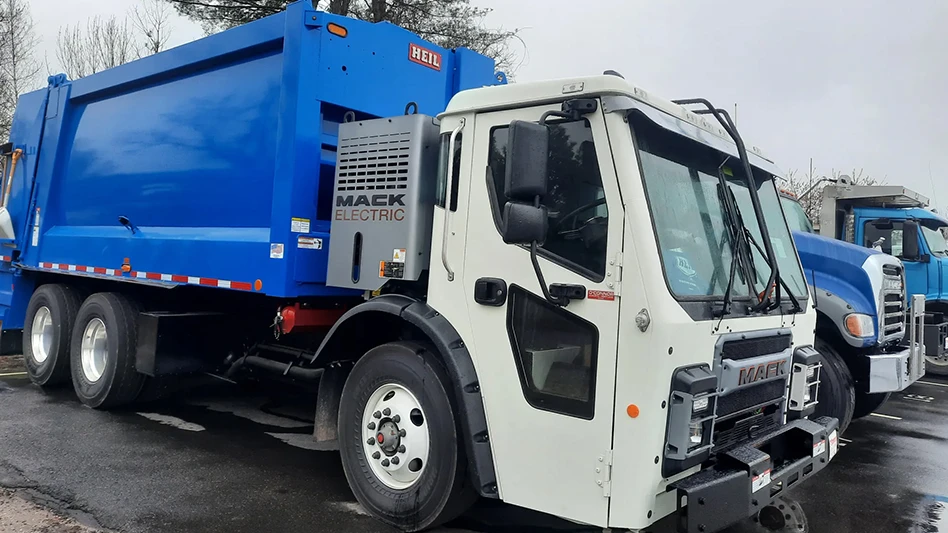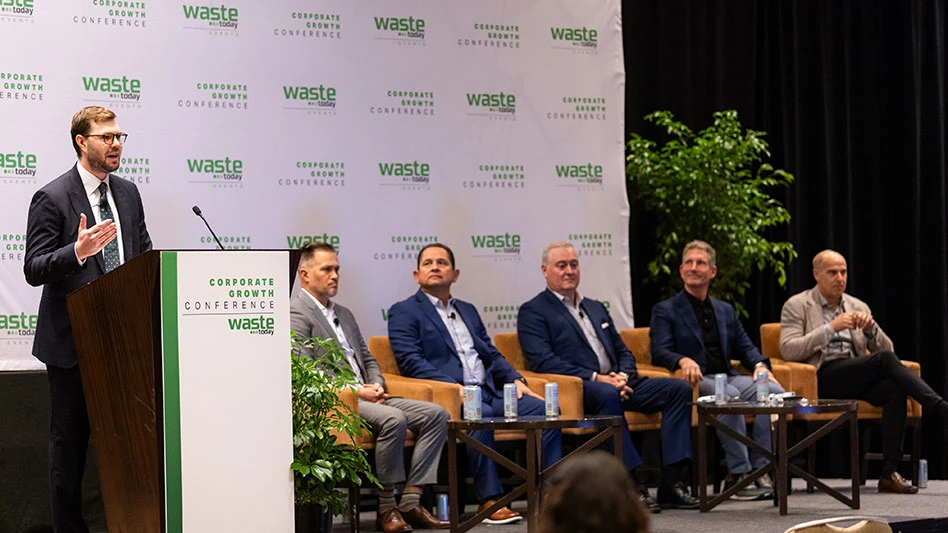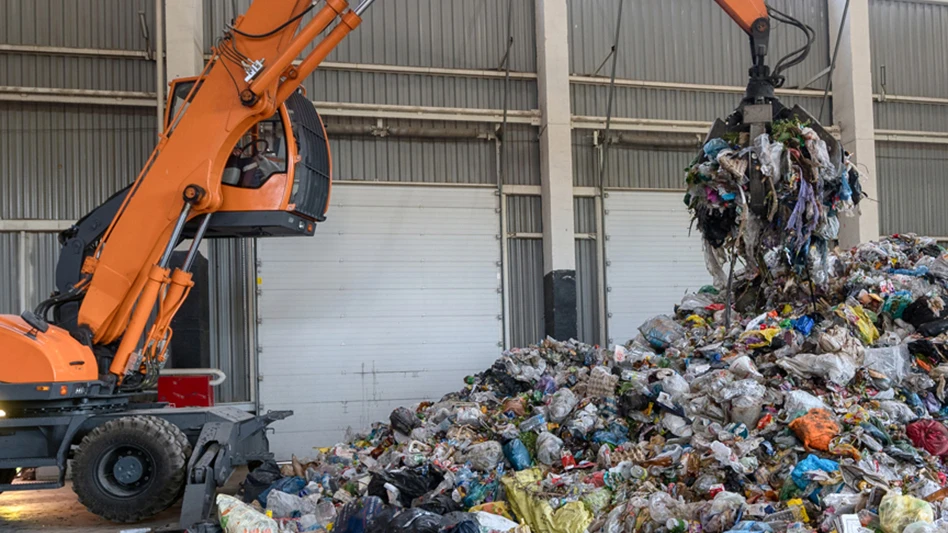
Photo courtesy of Mack Trucks
Greensboro, North Carolina-based Mack Trucks has delivered a Class 8 Mack LR Electric refuse truck to the city of Portland, Maine—the state’s first refuse battery-electric vehicle (BEV).
“The city of Portland’s choice to purchase the Mack LR Electric refuse truck to help meet its sustainability goals speaks to the partnership approach that allowed Mack and the city to implement the needed ecosystem of service and support for electric vehicles,” Mack Trucks North America President Jonathan Randall says. “Mack is excited to deliver the first electrified refuse vehicle to Maine.”
A combined grant from the Environmental Protection Agency’s (EPA) Diesel Emissions Reduction Act and the Maine Department of Environmental Protection helped fund the purchase of the truck.
“This is a significant step forward in electrifying the city’s vehicle fleet,” City Manager Danielle West says. “It represents a bold leap forward in sustainable transportation, offering an electric solution that significantly reduces carbon emissions and environmental impact.”
RELATED: Mack Trucks delivers electric refuse truck to Coastal Waste & Recycling
Mack says vehicle electrification will play a part in achieving Portland’s goal to run on 100 percent clean energy by 2040 and reports the city is interested in improving air quality by transitioning from diesel to electric vehicles.
Portland’s Mack LR Electric is equipped with a Heil 25-cubic-yard rear loader body, and it will be serviced and supported at Portland-based O’Connor Motor Company.
“Our familiarity with Mack through our previous vehicle purchases, along with our relationship with O’Connor makes this a great fit for the city of Portland,” says Mike Murray, director of public works for the city of Portland. “This is the first electric Class 8 vehicle in Portland’s fleet.”
RELATED: Mack sells two EV trucks to Canadian city
The truck offers a standard 376-kilowatt-hour battery capacity for 42 percent more energy and increased range between vehicle charges, Mack says. Twin electric motors produce 448 continuous horsepower and 4,051 pounds per foot of torque output from zero revolutions per minute.
Four nickel, manganese and cobalt oxide (NMC) lithium-ion batteries, charged through a 150-kilowatt SAE J1772-compliant charging system, power the vehicle and all onboard accessories through 12-voltage, 24-voltage and 600-voltage circuits.
According to Mack, the two-stage regenerative braking system helps recapture energy from the stops the vehicle makes each day.
Latest from Waste Today
- CAA submits final draft program plan in Oregon
- Washington city adds organics collection to waste service
- Aspen Waste Systems expands into Denver-metro market
- NYSAR3 seeks respondents to commercial recycling survey
- Aemitis AD system goes online
- Liebherr breaks ground on logistics center
- Rubicon appoints new CFO
- Nexus W2V attracts funding for waste conversion project in Indiana





